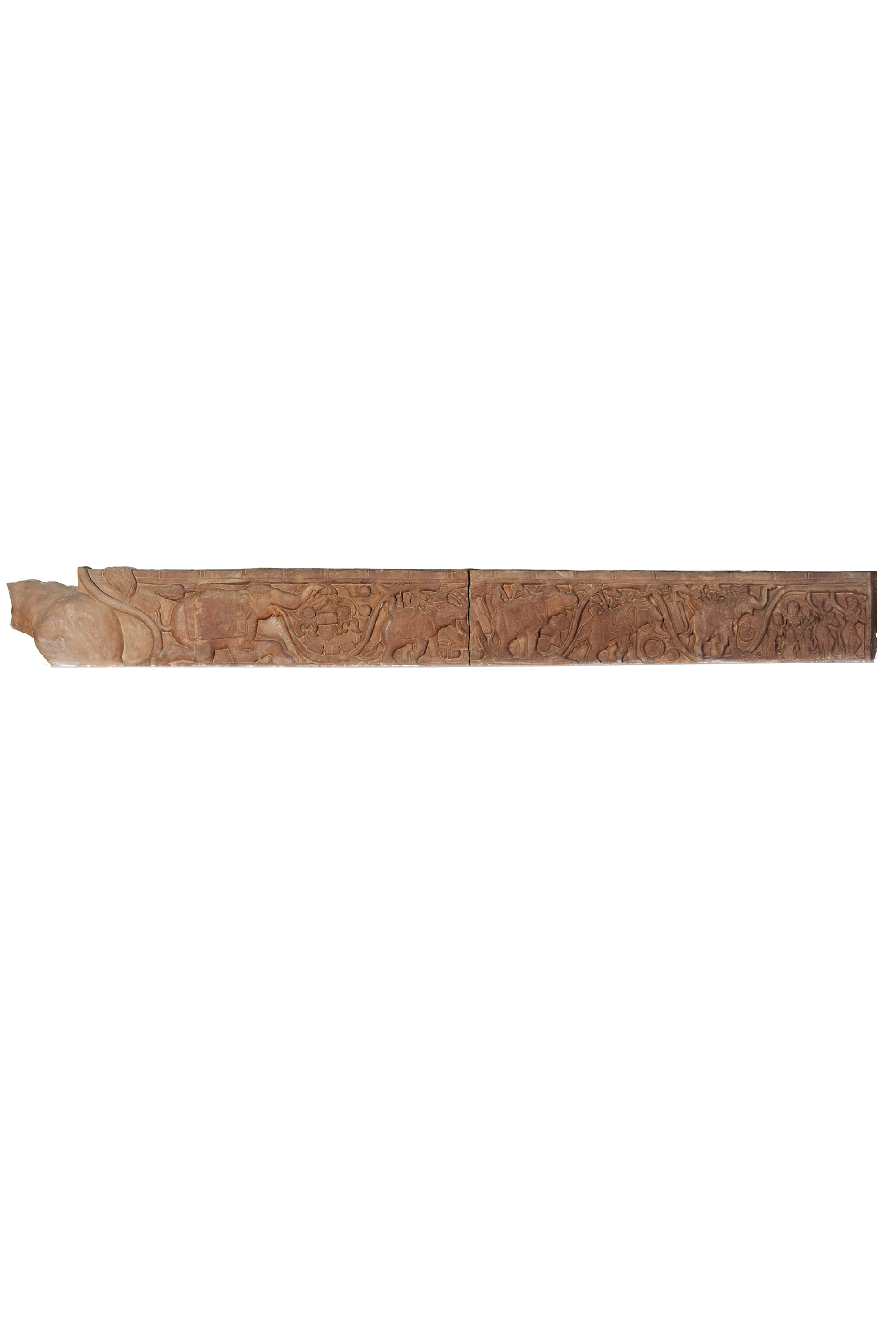Discover, Learn, immerse, Connect
Elephants Carrying Buddha's Relics
This beautiful sculpture is made of red sandstone. Originally, it functioned as a decorative beam at Bharhut, Madhya Pradesh and is currently at the Maurya and Shunga Gallery at the National Museum, New Delhi. It belongs to the Shunga dynasty.
The Mauryan empire was overthrown by Pushyamitra Shunga in 185 BCE. Pushyamitra was a General of the last Mauryan King Brihadratha. The Shungas ruled from the former Mauryan capital of Pataliputra (modern-day Patna). The Shungas played an important role in the enlargement and creation of many other stupas of our time. Although the Sanchi Stupa preceded their time, the Shungas enlarged the diameter of the Stupa almost by double and also built protective railings around it. It, however, should not be assumed that all Shunga kings equally promoted or tolerated Buddhism; their progenitor Pushyamitra vocally opposed it and made attempts to destroy stupas as well.
A parade can be seen in front of the procession of the elephants which indicates that the people of the Mahajanapada of Malla, an ancient Indian township celebrated the death of Buddha with dance and music. This stone highlights the last episode of Buddha’s life.
It is a single panel which depicts five elephants with kings on top of each carrying the relics of Buddha in caskets and prodding the elephants ahead. The figures have been inscribed in low relief and reflect a substantial knowledge of the proportionality and anatomy of the human body but lack in capturing movement and emotion when compared to the art of a later time such as its immediate successor, Kushana art.
It is believed that most stupas made across the world encase within themselves the relics of either Gautam Buddha himself or those of his followers. These relics being carried by elephants would have all found their way to one of our many stupas.
According to a Buddhist manuscript called Mahaparinirvana Sutta (dated 1st century CE), upon Buddha’s death, 8 north-eastern ruling classes of India claimed his remains. To avoid conflict Drona (a Brahmin) advised that the remains should be distributed amongst the clans equally. Eventually, the relics were carried to different kingdoms and stupas were built to preserve them.
 Government of India
Government of India



